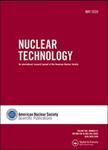版权所有:内蒙古大学图书馆 技术提供:维普资讯• 智图
内蒙古自治区呼和浩特市赛罕区大学西街235号 邮编: 010021

作者机构:Univ Washington Seattle WA USA Carnegie Mellon Univ Pittsburgh PA USA Francis Crick Inst London England
出 版 物:《NUCLEAR TECHNOLOGY》 (Nucl Technol)
年 卷 期:2023年第209卷第12期
页 面:2016-2029页
核心收录:
学科分类:08[工学] 0827[工学-核科学与技术]
基 金:NASA's Space Technology Research Grants Program
主 题:Jet mixing bubble impingement microgravity Tank Pressure Control Experiment computational fluid dynamics simulation
摘 要:For National Aeronautics and Space Administration s space mission planning, tons of cryogenic propellants need to be stored under microgravity conditions. Because of heat leaks into cryogenic propellant tanks, thermal stratification develops from lack of natural convection leading to boil-off of precious propellants. A thermodynamic vent system operates with a jet mixer to reduce thermal gradients within the fluid and control pressure inside the tank. In this work, a Reynolds-averaged Navier-Stokes-based computational fluid dynamics model was developed to study the fluid dynamics of jet-induced mixing and jet impingement on the large ullage bubble in the Tank Pressure Control Experiment (TPCE) under microgravity conditions. First, the computational model was benchmarked against existing experimental flow visualization data on the jet impingement. The jet mixing was then compared quantitatively with correlations for the jet radius to analyze the volumetric flow rate of the jet due to entrainment in the near field of the nozzle. The findings show that the confinement of the jet due to the ullage and the walls contributes positively to the jet entrainment rate, thus increasing the jet volumetric flow rate. In addition, the turbulence parameters are plotted to study the flow development for the TPCE case where the jet does not penetrate the ullage. Last, the model was used to determine the jet Weber number for penetration on the ullage bubble by varying jet inlet velocities. Numerical results show that the jet can penetrate the ullage when the jet Weber number is greater than 1.3.